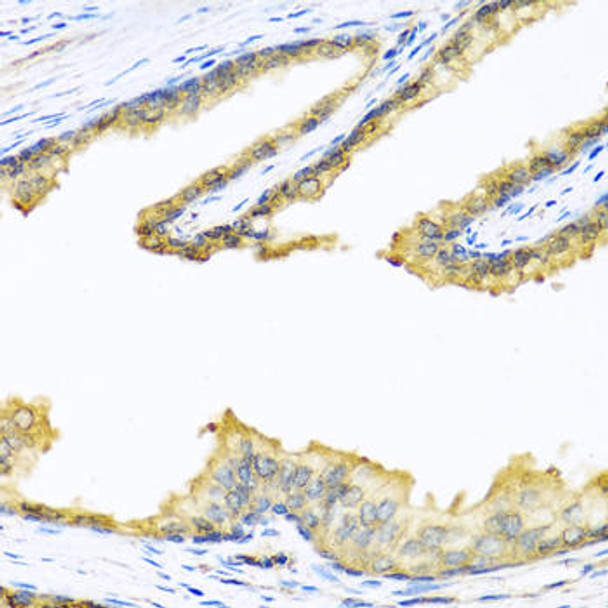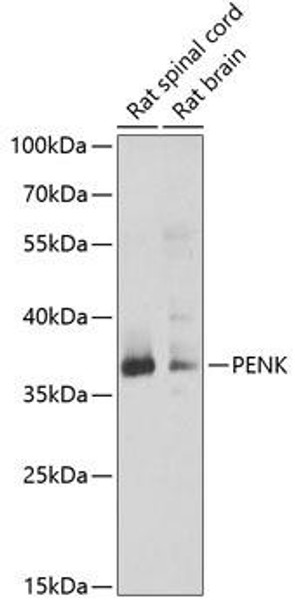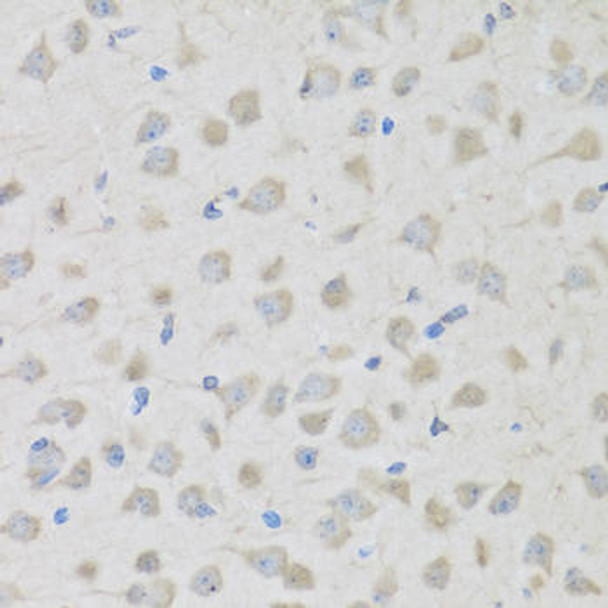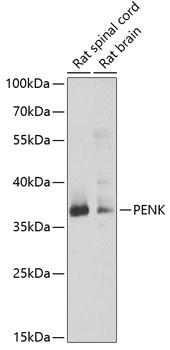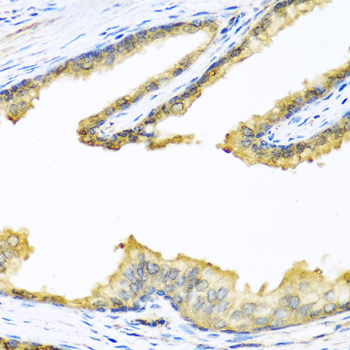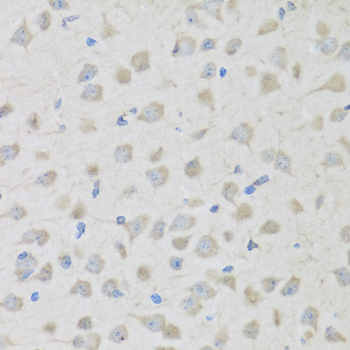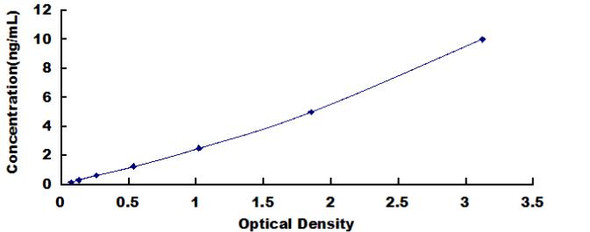Description
Anti-PENK Antibody (CAB6302)
The Proenkephalin A Polyclonal Antibody (CAB6302) is a valuable tool for researchers studying proenkephalin A, a precursor protein involved in the production of enkephalin peptides that regulate pain sensation and emotional responses. This antibody, produced in rabbits, is highly specific to human samples and is optimized for Western blot applications.Proenkephalin A is a key player in the endogenous opioid system, known for its role in modulating pain perception and mood. Research involving proenkephalin A has implications for understanding pain management, addiction, and mental health disorders.
The Proenkephalin A Polyclonal Antibody enables researchers to detect and analyze proenkephalin A expression in various cell types, providing valuable insights into its function and potential therapeutic applications.By targeting proenkephalin A, researchers can uncover new avenues for developing treatments for pain disorders, addiction, and psychiatric conditions. The Proenkephalin A Polyclonal Antibody is a reliable tool for investigating the complex mechanisms underlying these conditions and advancing the field of neuroscience research.
| Antibody Name: | Anti-PENK Antibody |
| Antibody SKU: | CAB6302 |
| Antibody Size: | 20uL, 50uL, 100uL |
| Application: | WB IHC |
| Reactivity: | Human, Mouse, Rat |
| Host Species: | Rabbit |
| Immunogen: | Recombinant fusion protein containing a sequence corresponding to amino acids 25-267 of human PENK (NP_001129162.1). |
| Application: | WB IHC |
| Recommended Dilution: | WB 1:500 - 1:2000 IHC 1:50 - 1:100 |
| Reactivity: | Human, Mouse, Rat |
| Positive Samples: | Rat spinal cord, Rat brain |
| Immunogen: | Recombinant fusion protein containing a sequence corresponding to amino acids 25-267 of human PENK (NP_001129162.1). |
| Purification Method: | Affinity purification |
| Storage Buffer: | Store at -20'C. Avoid freeze / thaw cycles. Buffer: PBS with 0.02% sodium azide, 50% glycerol, pH7.3. |
| Isotype: | IgG |
| Sequence: | ECSQ DCAT CSYR LVRP ADIN FLAC VMEC EGKL PSLK IWET CKEL LQLS KPEL PQDG TSTL RENS KPEE SHLL AKRY GGFM KRYG GFMK KMDE LYPM EPEE EANG SEIL AKRY GGFM KKDA EEDD SLAN SSDL LKEL LETG DNRE RSHH QDGS DNEE EVSK RYGG FMRG LKRS PQLE DEAK ELQK RYGG FMRR VGRP EWWM DYQK RYGG FLKR FAEA LPSD EEGE SYSK EVPE MEKR YGGF MRF |
| Gene ID: | 5179 |
| Uniprot: | P01210 |
| Cellular Location: | Secreted |
| Calculated MW: | 30kDa |
| Observed MW: | 36kDa |
| Synonyms: | PENK, PE, PENK-A |
| Background: | This gene encodes a preproprotein that is proteolytically processed to generate multiple protein products. These products include the pentapeptide opioids Met-enkephalin and Leu-enkephalin, which are stored in synaptic vesicles, then released into the synapse where they bind to mu- and delta-opioid receptors to modulate the perception of pain. Other non-opioid cleavage products may function in distinct biological activities. |
| UniProt Protein Function: | PENK: Met- and Leu-enkephalins compete with and mimic the effects of opiate drugs. They play a role in a number of physiologic functions, including pain perception and responses to stress. PENK(114-133) and PENK(237-258) increase glutamate release in the striatum. PENK(114-133) decreases GABA concentration in the striatum. Belongs to the opioid neuropeptide precursor family. |
| UniProt Protein Details: | Protein type:Hormone; Secreted; Secreted, signal peptide Chromosomal Location of Human Ortholog: 8q12.1 Cellular Component: cell soma; dendrite; extracellular region; nerve terminal; plasma membrane Molecular Function:neuropeptide hormone activity; opioid receptor binding Biological Process: neuropeptide signaling pathway; sensory perception; signal transduction; synaptic transmission |
| NCBI Summary: | This gene encodes a preproprotein that is proteolytically processed to generate multiple protein products. These products include the pentapeptide opioids Met-enkephalin and Leu-enkephalin, which are stored in synaptic vesicles, then released into the synapse where they bind to mu- and delta-opioid receptors to modulate the perception of pain. Other non-opioid cleavage products may function in distinct biological activities. [provided by RefSeq, Jul 2015] |
| UniProt Code: | P01210 |
| NCBI GenInfo Identifier: | 129770 |
| NCBI Gene ID: | 5179 |
| NCBI Accession: | P01210.1 |
| UniProt Secondary Accession: | P01210,Q6FHC6, Q6FHE6, B2RC23, |
| UniProt Related Accession: | P01210 |
| Molecular Weight: | 30,787 Da |
| NCBI Full Name: | Proenkephalin-A |
| NCBI Synonym Full Names: | proenkephalin |
| NCBI Official Symbol: | PENK |
| NCBI Official Synonym Symbols: | PE; PENK-A |
| NCBI Protein Information: | proenkephalin-A |
| UniProt Protein Name: | Proenkephalin-A |
| UniProt Synonym Protein Names: | SynenkephalinMet-enkephalinAlternative name(s):Opioid growth factor; OGF |
| Protein Family: | Proenkephalin |
| UniProt Gene Name: | PENK |

